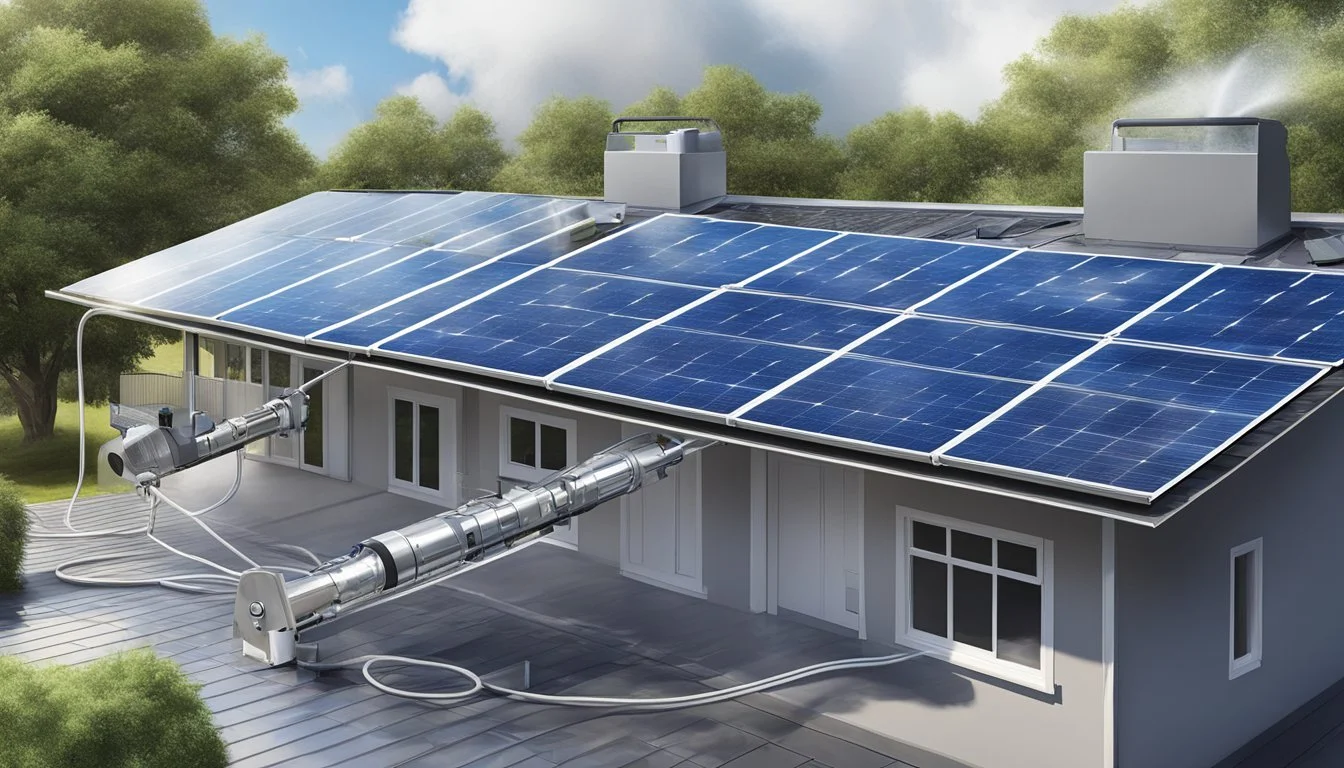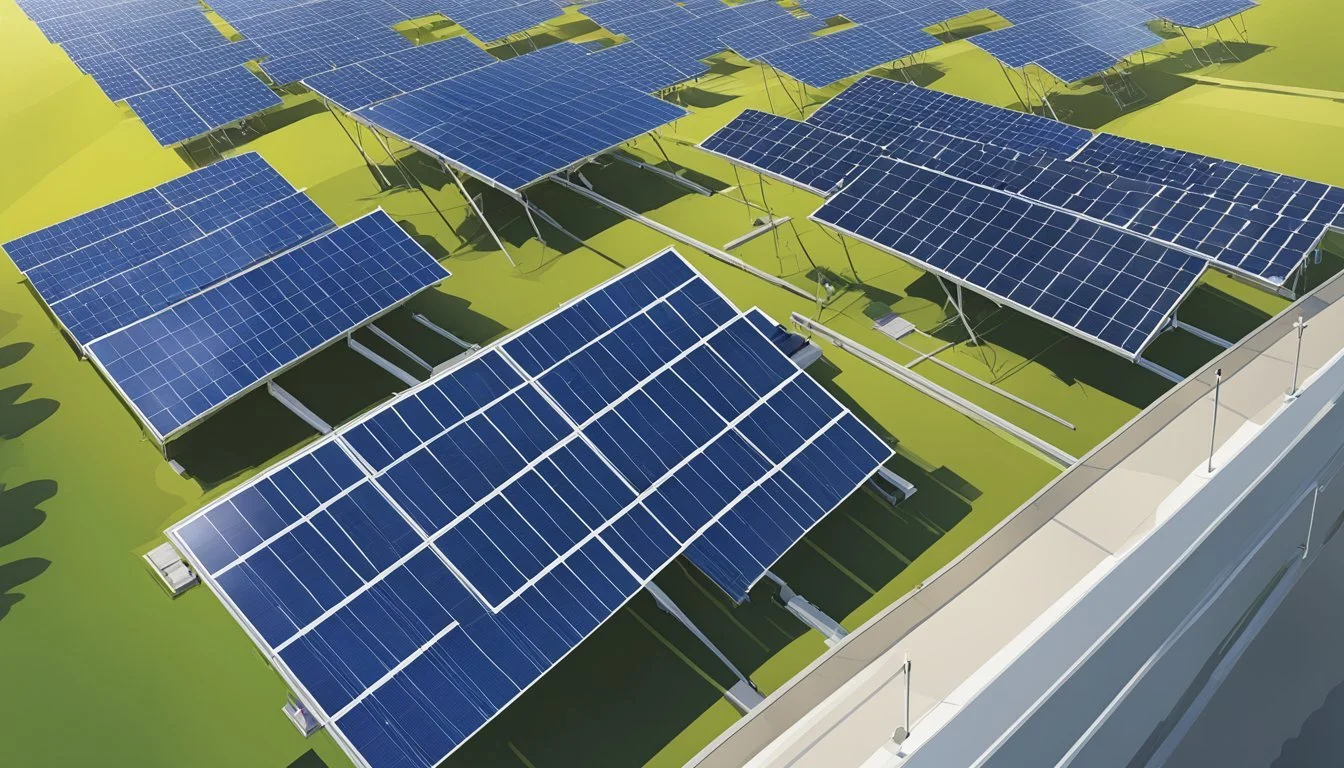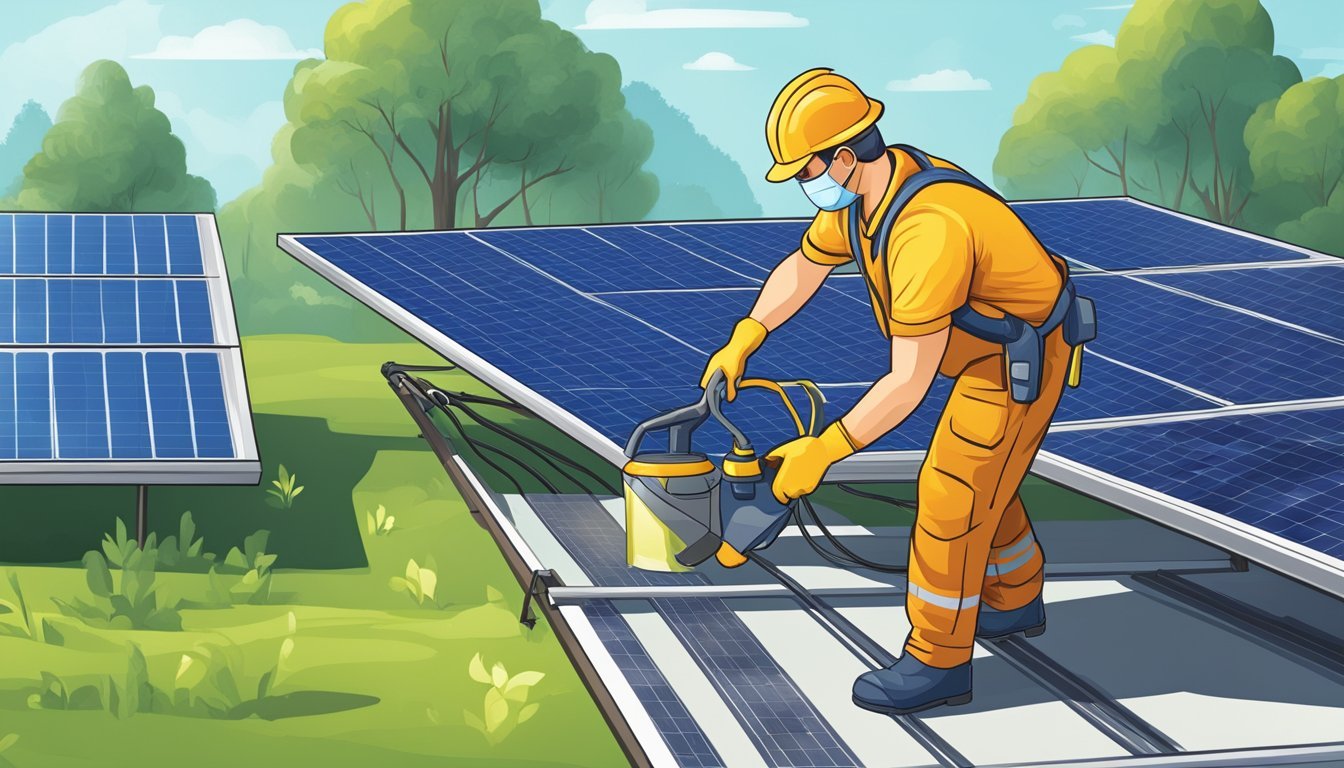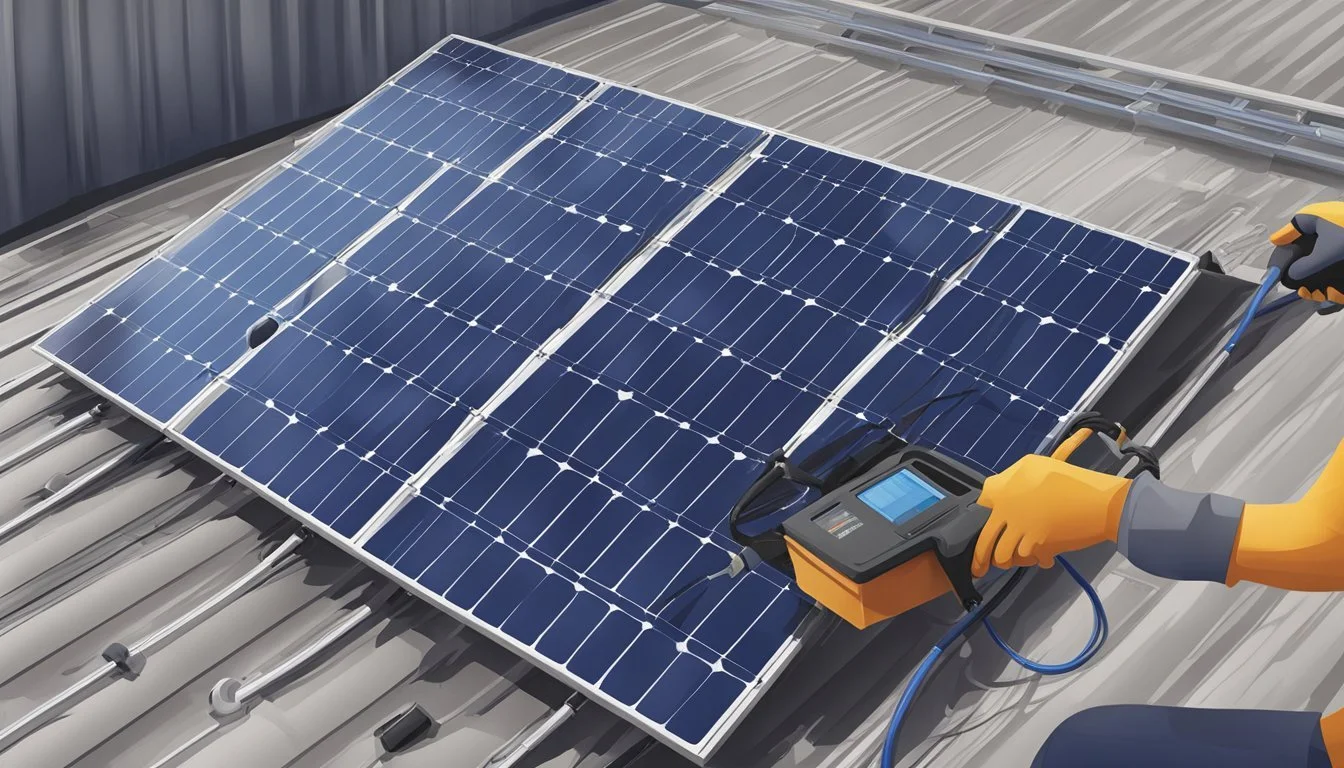The Ultimate Guide to Solar Panel Cleaning Systems for Maximum Efficiency
Optimal Maintenance Strategies
Solar panels represent a significant investment towards sustainable energy production. Over time, environmental pollutants like dust, leaves, and bird droppings accumulate on the panel's surface, potentially obstructing sunlight and decreasing their efficiency. Maintaining clean panels is crucial, as even a thin layer of dirt can create shading that reduces the solar power output by a noticeable margin. Regular cleaning is essential to ensure that the solar panels operate at their maximum capacity.
Cleaning systems and strategies for solar panels vary, but the objective remains the same: to remove obstructions and maintain a clear surface for the photovoltaic cells to capture sunlight optimally. Homeowners and businesses alike stand to benefit from understanding the proper maintenance techniques that keep solar panels at peak performance. Implementing a routine cleaning schedule can help protect the investment and maximize the efficiency of the solar panels, directly influencing the volume of electricity generated and ultimately contributing to a lower carbon footprint.
The Importance of Solar Panel Cleaning
Solar panel maintenance is crucial for ensuring peak performance and longevity. A key element of this maintenance is regular cleaning, which directly impacts solar panel efficiency and energy output.
Understanding Solar Panel Efficiency and Output
Solar panels convert sunlight into electricity, a process heavily dependent on the amount of light they receive. When a panel’s surface is free from obstructions, it can efficiently harness solar energy. Efficiency is evaluated based on the percentage of sunlight converted into usable electricity. Enhanced efficiency boosts the overall output, leading to a higher yield of energy production.
Effects of Dirt and Debris on Solar Panels
A variety of materials including dirt, dust, bird droppings, and leaves can accumulate on solar panel surfaces. These substances can obstruct sunlight and create shading, ultimately reducing a panel's ability to function optimally. Even a thin layer of grime can diminish a system's efficiency, as it prevents solar cells from capturing solar energy in full capacity.
Correlation Between Cleanliness and Energy Production
The relationship between solar panel cleanliness and energy production is evidenced by consistent findings — clean solar panels typically exhibit enhanced performance. A solar panel marred by dirt and debris operates less efficiently, leading to a measurable decrease in power generation. Regular cleaning, therefore, is not just about aesthetics, it's about maintaining the solar panel efficiency and ensuring a robust output of energy.
Solar Panel Cleaning Basics
Clean solar panels operate with maximum efficiency, and regular maintenance ensures their longevity and performance. Knowing when and how often to clean, along with following safety protocols, is foundational to the upkeep of solar panels.
Frequency of Cleaning Solar Panels
The frequency of solar panel cleaning largely depends on the environment. Panels may require more frequent attention in dusty areas or where bird droppings are common. Typically, it's advisable to assess solar panels every 6 months for signs of dirt accumulation which can impede their effectiveness; however, proactive checks after significant storms or winds can prevent prolonged efficiency drops.
Locations prone to dust or pollen: Monthly check-ups.
Areas with regular rainfall: Biannual inspections, as rain can naturally clean panels.
Choosing the Right Time for Cleaning
To minimize the impact on solar panel performance, the ideal times for cleaning are during the early morning or evening. Cleaning during these periods allows one to avoid the midday sun when panels are hottest and may be more susceptible to rapid temperature changes.
Early morning: Preferred due to overnight dew softening accumulated dirt.
Evening: An alternative to cool down the panels after a day's sun exposure.
Safety Considerations for Solar Panel Cleaning
Safety is paramount when cleaning solar panels, primarily when they are installed at a height. Use nonslip shoes and necessary harnesses if accessing rooftops. Always shut off the solar system before cleaning to prevent any electrical hazards.
Gear: Safety ropes, harnesses, and gloves.
Footwear: Sturdy shoes with a firm grip.
Cleaning Techniques and Tools
Effective solar panel maintenance hinges on using the right cleaning techniques and tools to ensure maximum efficiency without causing damage. This section details the distinctions between manual and automated cleaning systems, the materials and solutions appropriate for use, and a succinct guide to the cleaning process.
Manual vs. Automated Cleaning Systems
Manual Cleaning: Typically involves a hands-on approach using tools like a hose to rinse, a soft brush or microfiber cloth to scrub the surface, and a squeegee for drying. Manual cleaning allows for careful attention to each panel but can be labor-intensive and time-consuming.
Tools: Hose, soft brush, squeegee, microfiber cloth.
Process: Rinse with water, gentle scrubbing, and squeegee off the water.
Automated Cleaning Systems: These systems often include robotic cleaners or sprinkler-like setups that clean the solar panels on a pre-set schedule. Such systems can save time and reduce the need for manual labor, but initial set-up costs can be higher.
Systems: Robotic cleaners, sprinkler systems.
Advantages: Time-saving, less manual effort.
Appropriate Cleaning Materials and Solutions
The choice of cleaning materials should ensure that the solar panels are not scratched or damaged during the cleaning process. Opt for biodegradable soap or a cleaning solution that is recommended by the panel manufacturer. A hose with deionized water can be used for rinsing without leaving mineral deposits.
Materials: Microfiber or soft brush, deionized water, biodegradable soap.
Considerations: Abrasive materials and harsh cleaning agents should be avoided.
Step-by-Step Guide to Solar Panel Cleaning
Turn Off the System: Before cleaning, ensure the system is turned off.
Rinsing: Use a hose to gently rinse off loose debris.
Applying Cleaning Solution: If necessary, apply a gentle cleaning solution mixed with water onto the panels.
Scrubbing: With a soft brush or microfiber cloth, carefully scrub the panel's surface to remove any adhered dirt or grime.
Rinsing Again: Rinse the panels thoroughly with water to remove any soap residue.
Drying: Let the panels air dry or use a squeegee to remove excess water.
Minimizing Risks of Damage
When cleaning solar panels, it is critical to avoid actions that may cause damage to the panels and impact their performance. The materials and techniques used should preserve the integrity of the solar panels.
Avoiding Scratches and Abrasive Damage
To ensure the longevity of solar panels, it's paramount to protect them from scratches and abrasive damage during cleaning.
Materials to Avoid: Avoid using materials such as paper towels, abrasive brushes, or scouring pads that can scratch the panel's surface and compromise the protective anti-reflective coating.
Recommended Tools:
Soft brush or squeegee: Ideal for loosening and removing dirt without causing damage.
Microfiber cloth: Effective for a final wipe-down to remove water droplets without leaving smudges or streaks.
By using the proper tools, one can maintain the delicate surface of solar panels, ensuring they remain unscathed and efficient over time.
Precautions Using Chemicals and Pressure Washers
Care should be taken when using cleaning chemicals and pressure washers as they can potentially cause harm to solar panels.
Chemical Use:
Biodegradable soap: A recommended choice to avoid harsh chemicals that could be corrosive and damage the solar panels or their delicate protective coating.
Water Quality: Use clean water to prevent mineral build-up from potentially harsh water sources.
Pressure Washing:
Pressure Level: Very low pressure should be used if a pressure washer is employed to mitigate the risk of damaging the panels.
Distance: Maintaining an appropriate distance from the panels while pressure washing helps reduce the force exerted on their surface.
By taking these precautions into account, one can prevent chemical or pressure-related damage, safeguarding the efficiency and safety of the solar panel system.
Optimizing Cleaning for Environmental Conditions
To maintain solar panel efficiency, it's critical to tailor cleaning strategies to the local weather and climate conditions. This approach can help ensure panels operate at their peak performance by addressing environmental factors specific to each location.
Weather and Climate Impact on Cleaning Schedules
Location-specific weather patterns significantly shape the optimal timing and frequency of solar panel cleaning. In rainy regions, natural rainfall can aid in the cleaning process, potentially reducing the need for frequent manual cleaning. However, during long dry spells, a scheduled cleaning becomes necessary to prevent efficiency losses.
For snowy areas: Regular monitoring after snowfall is essential, as snow can entirely block sunlight. While most panels are tilted and snow will often slide off, in some cases manual removal may be advisable.
In dusty regions, especially near agricultural fields or deserts, high levels of dust necessitate a more rigorous cleaning schedule to prevent accumulation that significantly hinders solar absorption.
Customizing Cleaning Techniques for Your Location
Different environmental conditions require customized cleaning methods to safeguard panel efficiency without causing damage.
Areas with frequent rainfall: Utilize the natural cleaning effect of rain but follow up with spot checks for any remaining residue like bird droppings or stubborn grime.
Locations prone to dust and sand: Employ gentle, regular brushing to avoid scratching the panel's surface, possibly combined with a specialized, mild cleaning solution when necessary.
Note: Always consider the manufacturer's guidelines when selecting cleaning tools and solutions to avoid damaging the sensitive surfaces of the solar panels.
Advanced Solar Panel Cleaning Strategies
Maximizing the efficiency of solar panels involves smart cleaning strategies that leverage natural elements and technological innovations. These methods go beyond basic maintenance and enhance the energy output of your solar panels.
Utilizing Rainwater and Environmental Conditions
Rainwater: Solar panels can benefit greatly from the naturally soft and deionized quality of rainwater, which leaves minimal residue after evaporation. Homeowners may design systems to collect and channel rainwater effectively over the solar panels, enabling it to act as a natural cleanser that dislodges accumulated dust and debris.
Environmental Conditions: By understanding and capitalizing on local environmental conditions—such as dew and wind—solar panel owners can harness these elements to aid in the panel cleaning process. Dew can soften dirt overnight, which can then be blown away by morning breezes, reducing the need for manual cleaning efforts.
The Role of Inclination and Orientation
The angle and direction of solar panel installation not only optimize the capture of sunlight but also influence self-cleaning capabilities.
Inclination: A steeper angle of installation enhances the self-cleaning effect during rainfall, as water flows more readily off the surface, carrying dirt and debris with it.
Orientation: Properly orienting panels ensures that prevailing winds can assist in the removal of loose materials, and exposure to rain is maximized for natural cleaning.
Innovative Solar Panel Cleaning Technologies
Robotic Cleaners: They are designed to navigate the solar panel surfaces autonomously, efficiently removing dust and grime without risking damage to the panels. These devices often feature microfiber brushes and controlled water systems to perform thorough cleanings.
Electrostatic Systems: This technology uses an electrostatic charge to repel dust from the solar panel surface, minimizing the buildup of debris and reducing the frequency of wet cleanings.
Automated Sprinkler Systems: Some systems utilize sensors to determine the optimal time for cleaning and activate sprinklers that distribute water across the solar array, mimicking the cleaning action of heavy rainfall.
Each of these technologies reinforces the importance of maintaining clean solar panels for the reliable production of renewable energy, as dirt and debris can cast shadows that impede solar efficiency.
Maintenance and Monitoring for Longevity
Effective solar panel maintenance and monitoring are pivotal for ensuring their performance and longevity. They play a critical role in maximizing energy output and preserving the lifespan of the system.
Regular Upkeep and Preventive Measures
Regular upkeep is essential for solar panels to function efficiently. Preventive measures include inspecting for physical damages, such as cracks or warping, and cleaning debris like leaves and bird droppings that can obstruct sunlight. This regular cleaning can prevent a 5-25% reduction in power output. Here is a basic checklist for solar panel upkeep:
Visual Inspections: Check for any visible damage or soiling.
Debris Removal: Clear away leaves, dirt, or snow that might accumulate on the panels.
Surface Cleaning: Gently wash the panel surfaces with mild soap and water to remove any persistent residues.
Using Monitoring Systems to Optimize Cleaning
Monitoring systems can significantly aid in determining the optimal times for cleaning and maintenance. They track energy production and notify the owner when there is a notable drop in energy output, which can indicate the need for cleaning or maintenance. Here’s how monitoring optimizes solar panel cleaning:
Energy Output Tracking: Understand patterns in energy production.
Alerts: Receive updates when abnormalities in performance occur.
Performance Analysis: Use data to schedule cleaning during low-efficiency periods.
Understanding Warranty and Manufacturer Guidelines
Adherence to warranty terms and manufacturer guidelines is non-negotiable for maintaining solar panels. Most manufacturers require specific maintenance routines to keep the warranty valid, and these guidelines often include schedules for inspection and methods for cleaning. It's imperative to:
Read Warranty Terms: Be familiar with and follow the warranty requirements.
Follow Manufacturer Protocols: Apply their recommended maintenance practices.
Proper maintenance and careful monitoring are instrumental in safeguarding the efficiency and longevity of solar panel systems. Abiding by these procedures ensures the preservation of warranty and maintains high energy output over an extended lifespan.
Economic and Environmental Advantages
Ensuring the efficiency of solar panels through regular cleaning is not just a maintenance issue but also an economic and environmental strategy.
Reducing Energy Bills and Maximizing Savings
Savings on Energy Bills: By keeping solar panels clean, homeowners and businesses alike can prevent losses in efficiency. A solar panel's power capabilities can decrease by up to 30 percent when covered with dust, grime, and pollen. For a typical 5-kW residential solar system in California, a 7% annual efficiency loss translates to approximately $65 in monetary terms.
Investment Protection: Investing in periodic solar panel cleaning can protect the hit oflong-term efficiency losses, keeping the initial investment yielding at its maximum potential for the lifespan of the solar array.
Solar Panels’ Role in Reducing Carbon Footprint
Minimizing Environmental Impact: Solar energy inherently reduces reliance on fossil fuels and lowers carbon emissions. By maintaining optimal functionality through cleaning, panels can capture more sunlight and generate more clean electricity.
CO2 Reduction: Efficiently cleaned and maintained solar panels mean not only lower energy bills but also a substantial impact on one's carbon footprint. A solar system operating at peak performance has the potential for significantly more carbon offsets due to the increased electricity produced cleanly.
Professional Solar Panel Cleaning Services
Professional cleaning services offer specialized expertise and equipment to maintain solar panel efficiency. Homeowners may benefit from these services which ensure the longevity and performance of their solar energy systems.
When to Hire a Professional Cleaning Service
Homeowners should consider professional cleaning services when:
Access to solar panels is challenging: Roof-mounted panels or systems in hard-to-reach places demand professional skills and safety measures.
Solar panel system is extensive: Larger arrays can be time-consuming and more complex to clean properly.
Safety is a concern: Professionals are trained to navigate rooftops safely and have the proper gear.
Optimal cleaning is required: Certain climates or environments, such as areas with high bird populations or excessive pollen, might necessitate professional-grade cleaning methods and tools.
Comparing DIY Cleaning vs. Professional Services
Factor: Cost
DIY Cleaning: Usually lower since it only involves time and basic cleaning materials.
Professional Services: Higher due to specialized equipment and expertise.
Factor: Time
DIY Cleaning: Can be time-consuming for the homeowner to do themselves.
Professional Services: Efficient, as professionals can complete the job quickly with their experience.
Factor: Safety
DIY Cleaning: Risk of falls or injury, especially on steep roofs or with multi-story buildings.
Professional Services: Professionals are trained to mitigate safety risks with appropriate gear and protocols.
Factor: Quality
DIY Cleaning: May vary depending on the homeowner's knowledge and diligence.
Professional Services: Consistently high, as cleaners use advanced techniques and solutions to ensure panels operate at peak efficiency.
Factor: Convenience
DIY Cleaning: Scheduling and effort required by the homeowner.
Professional Services: Scheduling at the homeowner's convenience, with minimal effort required on their part.
Homeowners might weigh their personal safety and quality expectations against the expense of hiring professional services. Professional cleaning services often present the safest and most effective option, especially if the solar panel system is expansive or difficult to access.
Troubleshooting Common Cleaning Issues
Solar panel maintenance is pivotal to ensuring peak performance. Two prevalent issues when cleaning solar panels are mineral deposits from hard water leading to streaking, and the stubborn presence of dirt and grime. This section provides effective strategies to address these challenges.
Dealing with Hard Water and Streaking
Hard water, often used in cleaning, carries minerals that leave visible streaks on solar panels after drying. These streaks can obstruct sunlight and impede efficiency. To combat this:
Use distilled or deionized water: This water lacks the minerals that cause streaking.
Apply a proper rinsing technique: After cleaning, a thorough rinse with distilled water can prevent residue left by tap water from drying into streaks.
If streaking persists:
Employ a water softener system: For regular cleaning, a water softening system can reduce the mineral content in water.
Utilize vinegar in the cleaning solution: Vinegar, a natural descaling agent, can break down mineral buildup. Mix a solution of equal parts water and vinegar to treat affected areas.
Overcoming Challenges with Persistent Dirt and Grime
Dirt and grime accumulation can significantly hinder the energy output of solar panels. To effectively remove these elements:
Pre-wash to loosen dirt: Before using any cleaning agents, a light rinse will help loosen and remove superficial dirt.
Choose the right cleaning tools: A soft brush or cloth-covered sponge should be used to gently agitate and lift stubborn grime.
For ingrained dirt:
Use a mild, ammonia-free detergent: A gentle detergent can assist in breaking down grime without damaging the panels.
Create a regular maintenance schedule: Consistent cleaning reduces the chance for dirt and grime to become too entrenched and difficult to remove.
By addressing these specific issues, solar panel efficiency can be greatly improved, thereby ensuring maximum renewable energy yield.
FAQs About Solar Panel Cleaning
Is it necessary to clean solar panels on the roof?
Yes, cleaning solar panels is crucial since dirt, debris, and bird droppings can significantly decrease their efficiency. Clean panels ensure maximum conversion of sunlight to electricity.
What is the safest method to clean rooftop solar panels?
Safety is paramount. One should first shut off the solar panel system to prevent any electrical hazards. Using a garden hose, gently rinse the panels from the ground if possible. If roof access is required, they should wear proper safety gear and secure footing.
Can a garden hose provide enough water pressure for cleaning solar panels?
A garden hose typically provides adequate water pressure to rinse off loose dirt without damaging the solar panels.
Is drying the panels necessary after cleaning?
Allowing solar panels to air dry is generally recommended. They are designed to withstand various weather conditions, so manual drying is not necessary.
What solution is best for cleaning solar panels?
A bucket of soapy water using mild detergent is suitable. It is important not to use harsh chemicals which can damage the panels.
How does air pollution affect solar panel cleaning frequency?
Areas with high air pollution may require more frequent cleaning as panels are likely to accumulate residues faster, leading to potential hot spots which can affect their performance and durability.
What are 'hot spots' and how do they relate to cleaning?
'Hot spots' are areas on the panel that overheat due to dirt or debris, potentially causing damage. Regular cleaning helps prevent their formation, maintaining the panel's efficiency and longevity.
Conclusion
Solar panel cleaning is a significant factor in maintaining optimal efficiency. They have established that adhering to a regular cleaning schedule is imperative for maximizing energy output. Homeowners and businesses are empowered with the knowledge that a manageable regimen can lead to substantial benefits, both financially and in terms of energy production.
Frequency of cleaning can vary depending on location and environmental factors, but ensuring that panels are free from dirt and debris is crucial. Data suggests that well-maintained solar panels improve their performance and extend their durability.
The guide serves as a tool to inform and equip individuals with the know-how to keep their solar systems running effectively. Using the right tools—a soft brush and manufacturer-recommended cleaning solutions—can prevent damage and are essential for proper maintenance.
For safety, homeowners should wear shoes with a reliable grip to prevent falls, and it’s preferable to clean panels during cooler parts of the day to avoid excessive heat. Spraying panels helps in the initial loosening of dirt and is a recommended step in the cleaning process.
Executing a thorough cleaning procedure enhances the longevity of solar panels and helps sustain their warranty conditions. The resources put forth in this guide are designed to facilitate users in achieving a clean and efficient solar energy system.






